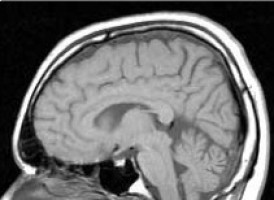
For years, cancer researchers have noticed that more men than women get a lethal form of brain cancer called glioblastoma.
They’ve also found that these tumours are often more aggressive in men.
But pinpointing the characteristics that might help doctors forecast which tumours are likely to grow more quickly has proven elusive.
University of Wisconsin–Madison researchers are turning to artificial intelligence to reveal those risk factors and how they differ between the sexes.
Radiology and biomedical engineering professor Pallavi Tiwari and her colleagues have published their initial findings in the journal Science Advances, hinting at the promise of AI for improving medical care for cancer patients.
“There’s a tonne of data collected in a cancer patient’s journey,” says Tiwari, who is also affiliated with the department of medical physics.
“Right now, unfortunately, it’s usually studied in a siloed fashion, and this is where AI has huge potential.”
Few researchers better understand this potential than Tiwari.
Arriving at UW–Madison in 2022 to help lead the university’s new AI initiative in medical imaging, Tiwari co-directs the Imaging and Radiation Sciences Programme at the Carbone Cancer Centre.
Her research leverages the computational power of AI models to probe large volumes of medical images and find patterns that could help oncologists and their patients make better-informed decisions.
“We want to address the entire spectrum of challenges in a cancer patient’s journey, starting from diagnosis and prognosis to treatment response assessment,” says Tiwari.
In this case, Tiwari and former graduate student Ruchika Verma turned to digital images of pathology slides — thin slices of tumour samples — in search of patterns that might forecast how quickly a tumour could grow and thus how long a patient might expect to survive.
Glioblastoma is one of the most aggressive forms of cancer, with a median survival of 15 months after diagnosis.
“Patients often don’t have long lives after diagnosis,” says Tiwari.
“But a big challenge is prognosis — identifying how long patients are actually going to live and what their outcome is likely to be. This is important because the outcomes ultimately govern the treatments that they’re getting and their quality of life after diagnosis.”
To tackle this challenge, Tiwari and Verma built an AI model that can identify even subtle patterns in pathology slides that might never be apparent to the naked eye.
Using data from more than 250 studies of glioblastoma patients, they trained the model to recognise tumours’ unique characteristics, such as the abundance of certain cell types and the degree to which they invade surrounding healthy tissue.
Further, they trained the model to identify any patterns between these characteristics and patients' survival time while accounting for their sex.
In doing so, they developed an AI model that was able to identify risk factors for more aggressive tumours that are strongly associated with each sex.
For females, higher-risk characteristics included tumours that were infiltrating into healthy tissue.
Among males, the presence of certain cells that surround dying tissue (called pseudopalisading cells) was associated with more aggressive tumours.
The model also identified tumour characteristics that appear to translate to worse prognoses for both men and women.
The study could help lead to more individualised care for glioblastoma patients.
“By uncovering these unique patterns, we hope to inspire new avenues for personalised treatment and encourage continued inquiry into the underlying biological differences seen in these tumours,” Verma says.
Tiwari and her colleagues are doing similar work using MRI data and have begun using AI to analyse pancreatic and breast cancers with the aim of improving outcomes for patients.
In addition to her research, Tiwari is helping to shape the university’s RISE-AI and RISE-THRIVE initiatives, which are establishing UW–Madison as a leader of cross-disciplinary research on artificial intelligence and the human health span, respectively.
“UW has a rich and diverse expertise across our engineering and medical campuses,” says Tiwari, “and with the RISE initiatives, we are well positioned to be at the forefront of translating AI research in clinical care.”
Source: University of Wisconsin-Madison
The World Cancer Declaration recognises that to make major reductions in premature deaths, innovative education and training opportunities for healthcare workers in all disciplines of cancer control need to improve significantly.
ecancer plays a critical part in improving access to education for medical professionals.
Every day we help doctors, nurses, patients and their advocates to further their knowledge and improve the quality of care. Please make a donation to support our ongoing work.
Thank you for your support.